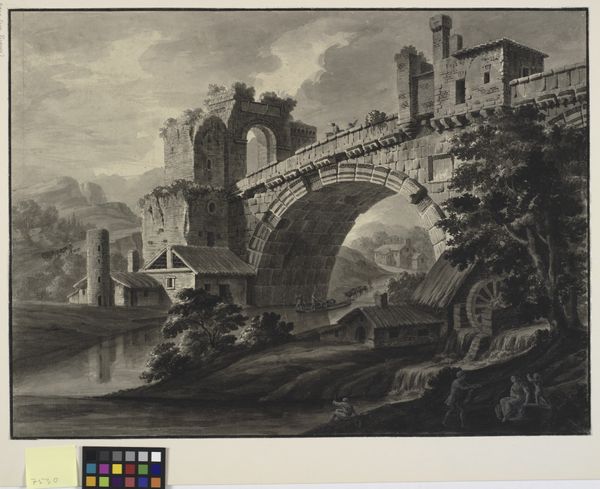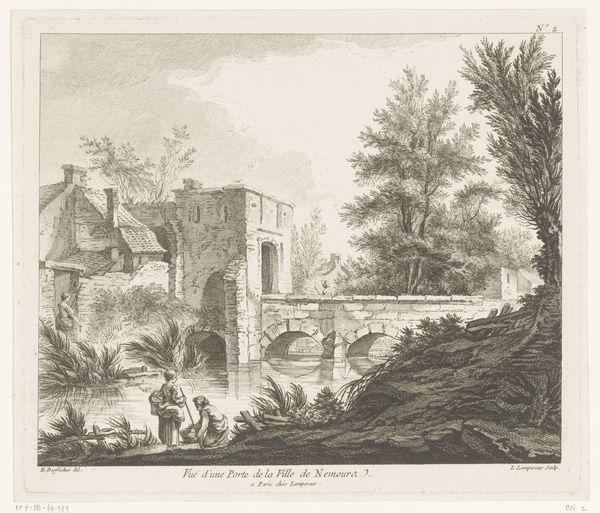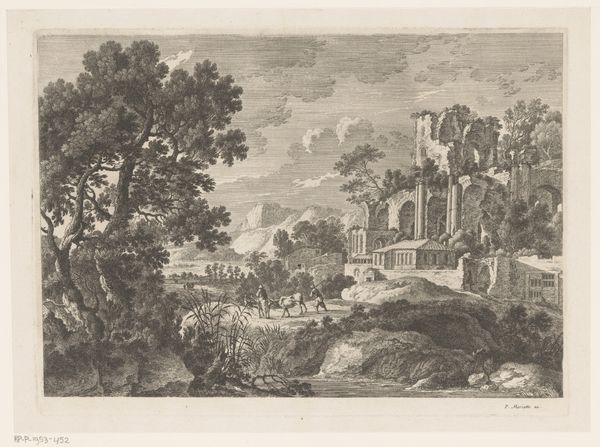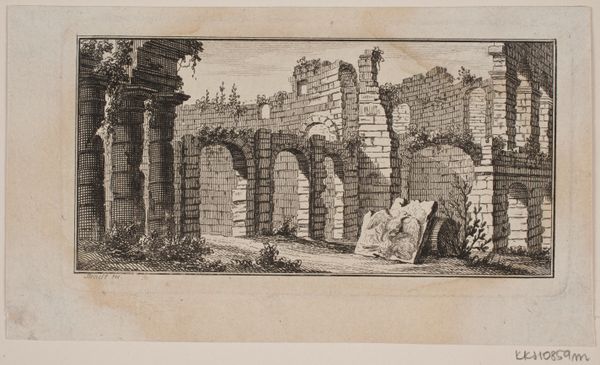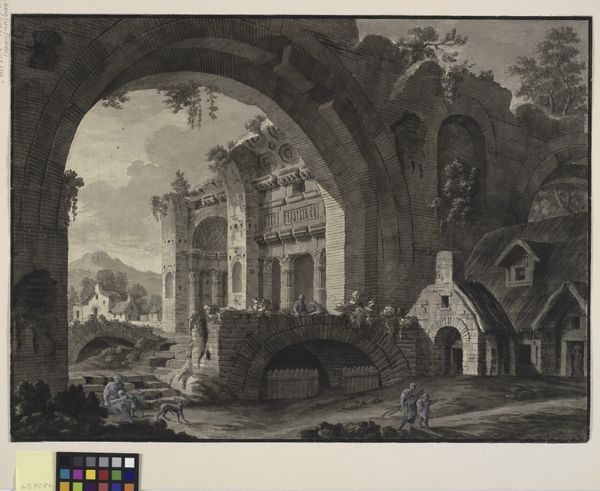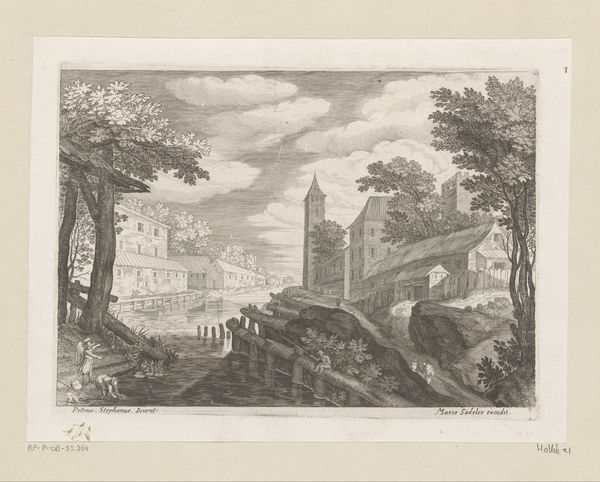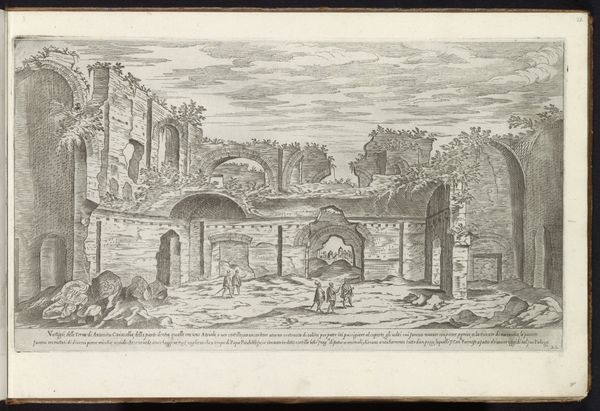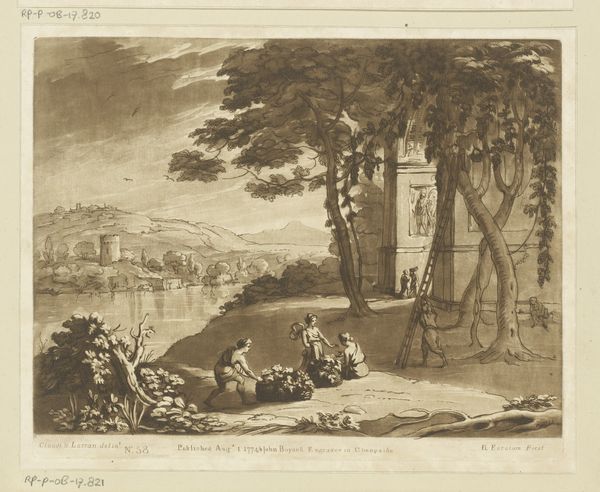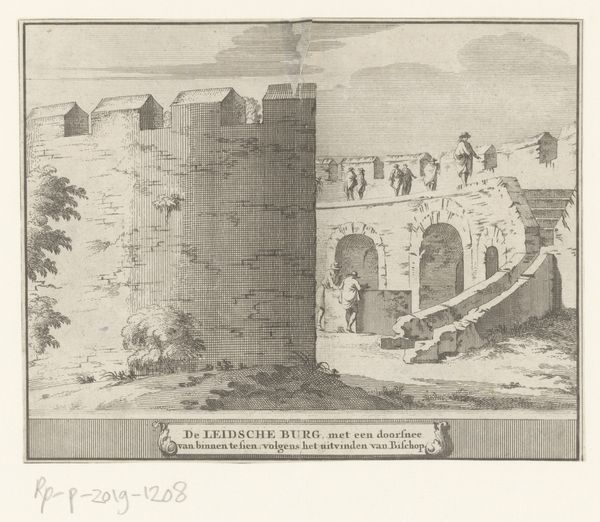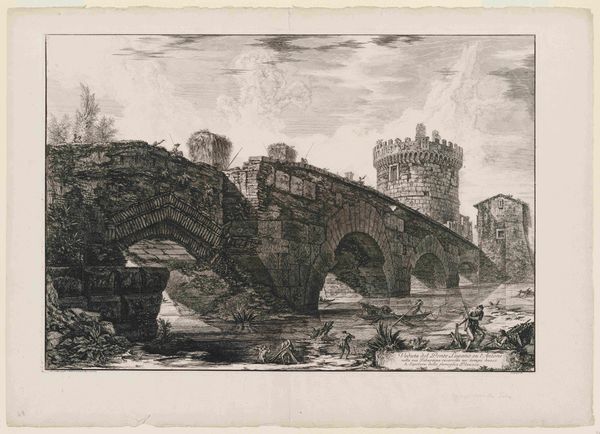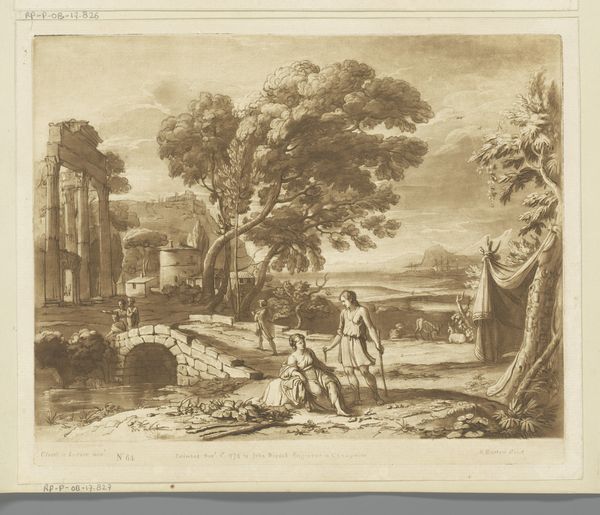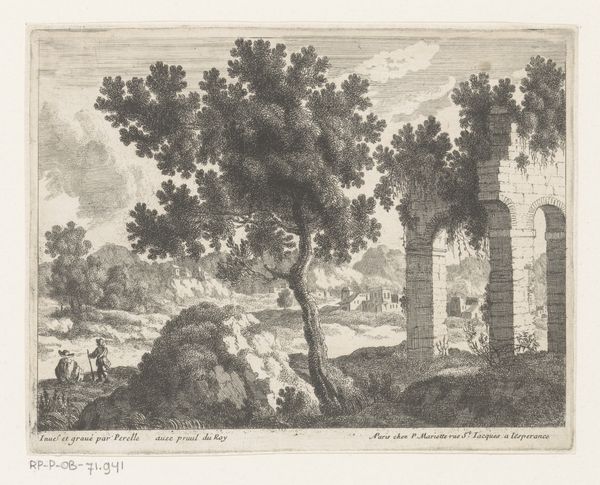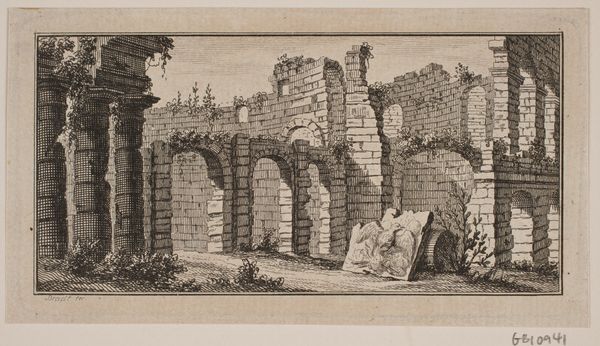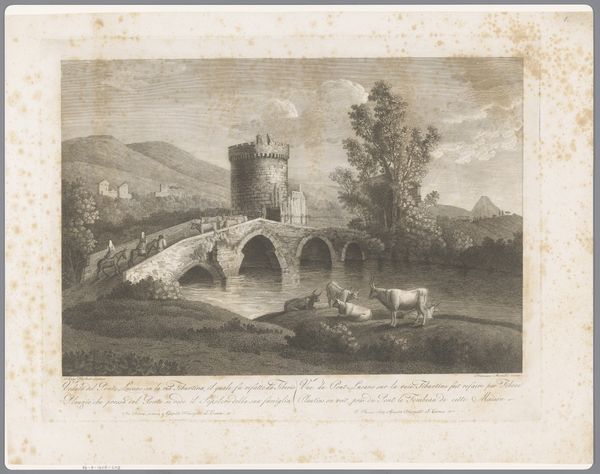
drawing, tempera, architecture
#
drawing
#
neoclacissism
#
tempera
#
landscape
#
history-painting
#
watercolor
#
architecture
Dimensions: 421 mm (height) x 572 mm (width) (bladmaal)
Curator: This is Robert Adam’s “Architectural fantasy of a ruined bridge in a landscape,” a tempera drawing from 1777. Look closely, and you'll see incredible detail. Editor: My first impression is one of melancholy. The muted colors and crumbling architecture evoke a sense of lost grandeur and time’s relentless march. Curator: It's striking how Adam uses the ruined bridge as a potent symbol of societal decline, especially in light of contemporary social and political turmoil in Europe at the time. The picturesque aesthetic almost romanticizes the decay. Editor: Yes, decay becomes an element within the beautiful. Notice how the architectural motifs—the arches, the towers—still hold echoes of classical ideals even as they are fragmented? There’s a visual tension there, an acknowledgment of a lost golden age. Curator: And consider who gets to look at and interpret that decay. The small figures give scale and perspective, but also bring up questions about spectatorship and power. Who gets to contemplate this ruin, and whose labor built what has fallen? Editor: Those figures are fascinating! We have one near the base who appears to be gesturing upwards as if admiring it, but what’s arresting to me are the figures by the waterline embracing each other as the ruins reflect. That is powerful, human. Curator: It does emphasize a tension—between the enduring symbol of imperial strength and the very human, temporal lives playing out at its base. Editor: Absolutely. This wasn’t merely a representation of landscape; it offered reflections on permanence and change. This image is, as the youth would say, 'deep'. Curator: It does indeed provoke critical reflection, demonstrating how Neoclassicism often subtly addressed its present through historical or symbolic narratives. The question it asks is whether we, the viewers, learn anything from those histories or repeat past mistakes. Editor: I like that--it makes me see it less as a scene of beautiful decay and more a kind of quiet warning. It reminds us to learn.
Comments
No comments
Be the first to comment and join the conversation on the ultimate creative platform.
